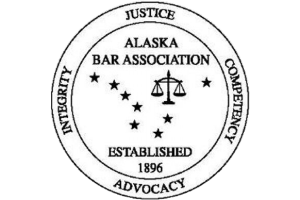- Free Consultation: (907) 277-3090 Tap Here to Call Us
Civil Justice In Alaska Car Accidents

What is Civil Justice? Criminal law uses tools such as prison, jail, fines, probation, community service and other penalties to punish a person who is guilty of a crime. Civil Justice is shaped differently.
Negligence is a Civil Justice Matter
Determining who is at fault in a traffic accident is a matter of deciding who was negligent. In many cases, your instincts will tell you that a driver, cyclist or pedestrian acted carelessly, but not what Civil Justice rule or rules the negligent person violated. An attorney reviews a number of resources to help you determine who was at fault for your accident, such as police reports, state traffic laws, and witnesses.
Negligence is not a Crime
What determines if an injury is a crime or negligence? An injured person is described as a victim. Justice for the victim is determined by how the injury happened. The question is: “Was the injury an accident or was the injury on purpose?“
- Negligence = Accident
- Crime = On Purpose
When one person hurts another on purpose, they have committed a crime and are punished within the criminal justice system criminal. A purely negligent person does not intend to hurt another person. For example: A driver distracted by traffic behind him does not see a red light in time. The distracted driver is unable to stop. He accidentally hits another vehicle while trying to stop. The distracted driver made a mistake. He was negligent. The negligent driver is responsible for the damages. The Civil Justice system addresses injuries caused by accidents.
Civil Justice in Negligence Cases
Personal injury and negligence cases often resolve with a settlement agreement before trial is needed. When parties do not agree to settle the claim, a lawsuit is required. Johnson Law, P.C. works hard to settle our clients’ car accident cases without the court.
In some cases, we must file a lawsuit and go to trial. The civil justice system allows a person or entity (the plaintiff) to sue another person or entity (the defendant) for harm or wrongdoing. In negligence claims, justice is determined by the cost of the damages. Courts look to a number of factors in determining whether a driver was negligent in Civil Justice cases. Some of these factors include, but aren’t limited to, the following:
- Disobeying traffic signs or signals
- Failing to signal while turning
- Driving above or below the posted speed limit
- Disregarding weather or traffic conditions
- Driving under the influence of drugs or alcohol
Alaskan Civil Justice law requires a negligent person to assist the victim of the negligence, or to assist the family of the victim. Money is the leading way to assist the victim in a negligence claim. In other words, society does not punish a negligent person with a jail sentence. Society asks a negligent person to pay for the damages they caused.
Johnson Law, P.C. has been helping Alaskans for nearly 30 years. It’s who we are.
And while we hope you never need us… We’re here if you do.
Please call Johnson Law, P.C. to discuss your case: (907)277-3090 or use our online contact form.
Secondary Source: FindLaw, “Car Accident Basics“
Image Source: RAND Institute for Civil Justice







